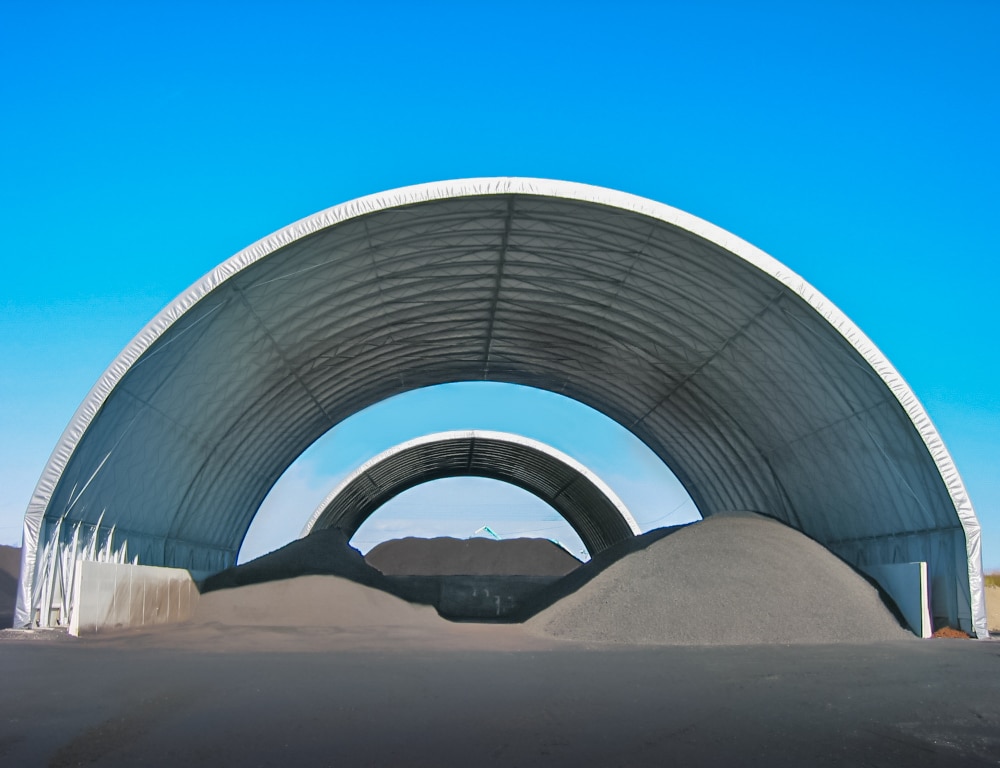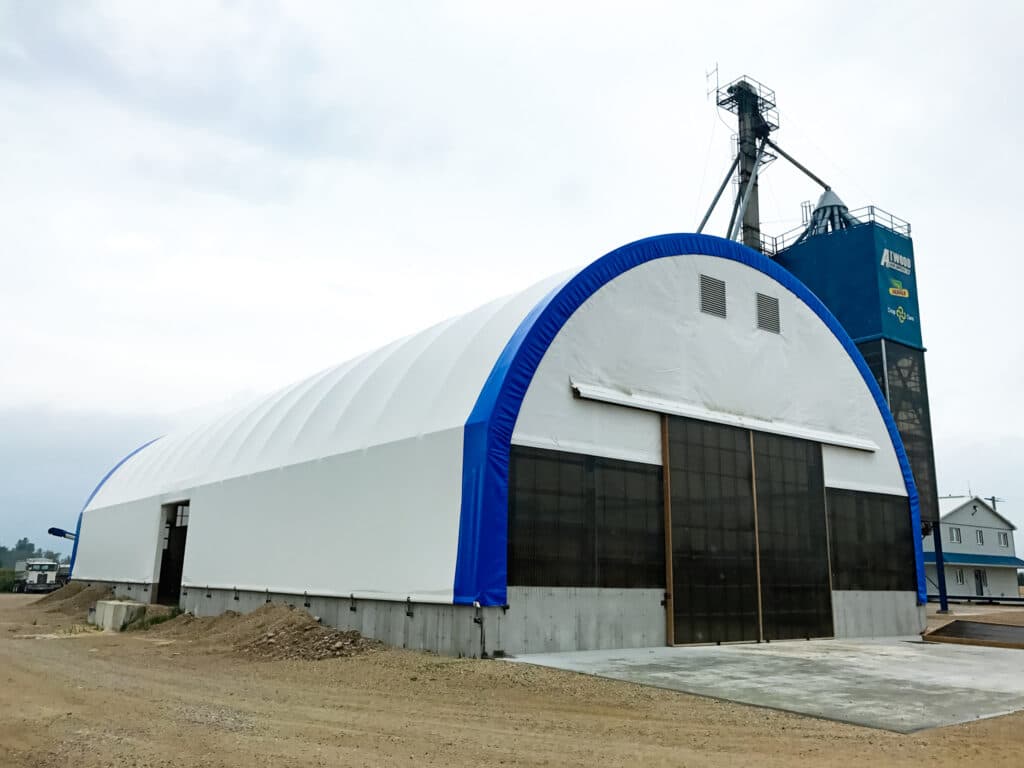Tension fabric buildings are fast becoming the go-to solution for a number of industries worldwide. Why? One word: versatility. They are quick to erect, durable, well-insulated, highly flexible, and can be reconfigured easily to meet your company’s specifications and needs.
These types of structures are quickly gaining traction because they offer a wide range of benefits not afforded by conventional brick and mortar buildings. Trade shows, modular buildings, storage, lunch halls, temporary events, and retail environments, a tensioned fabric system can be rolled out for a wide range of use cases. A great option if you want to quickly create a specific space that is both attractive and functional.
If you’re looking for a building solution that is cost-effective and energy-efficient, and can quickly be modified, then a tension fabric solution is the way to go.
More Tension, Less Stress
With tension fabric solution structures, you can quickly add windows and doors, and modify the height, width, and length of the building according to your specific needs. The way these types of buildings are designed means that they require less energy than traditional structures, making them more energy-efficient, by eliminating the need to rely on mechanical systems like fans or ACs to increase the airflow within a building.
Moreover, because the fabric used in their construction is breathable and waterproof, it has excellent insulation properties which means that they keep temperatures and humidity stable, holding heat during the winter months while remaining cool during the summer months.
Tension fabric structures are made of high-quality materials that make them extremely durable. The material is lightweight but strong and it will stand up to the elements. Tension fabric structures are also UV and fire-resistant, waterproof, and easy to clean and maintain.
Explosive Growth Across Industry Sectors
Tension fabric buildings are used for animal housing, equestrian riding arenas, materials storage, warehousing, protecting important equipment, expanding offices, and much, much more.
This explains why fabric structures have experienced explosive growth in popularity among public works and road maintenance departments, for example. This is also true for businesses that produce and store commodities such as fertilizers, cement, compost, and potash, as well as recyclers and mining companies who are using it to efficiently manage enormous amounts of material. Fabric tension buildings are also proving popular for garages, workshops, boats, and RV storage.
Sports
Let’s head to Qatar (host nation of the 2020 FIFA World Cup later this year) to highlight the growing popularity of tension fabric structures globally.
The tent roof structure of Al Bayt, the biggest stadium of the tournament, for example, is based on the strict application of the lightweight construction principle for wide-span minimal surface structural systems. This striking landmark is inspired by traditional Bedouin tents in appearance, form, and structural principle. It uses the absolute minimum of materials in combination with the greatest possible structural efficiency and is captivatingly elegant.
This FIFA World Cup venue will be the first building in Qatar to have a tensile-compression ring structure, and also features an inner perimeter with no columns and no obstructions between spectators and the field of play. SL-rasch.com reports that a cable ring structure will form the opening over the football pitch, which can be temporarily covered with a convertible, centrally gathered membrane whenever necessary. Built as part of the Qatar 2022 World Cup bid, this showcase stadium is truly an engineering feat with fabric tension-building principles at the heart of this desert gem.
In other sports settings, tension fabric buildings provide enough space for individuals and teams to practice or train, facilitated by its spacious, high ceiling and clear span design with no internal columns. Bright and breezy, along with multiple use options, these structures can be customized to fit user requirements, and are quick, practical options when indoor space is urgently needed.
These robust, aluminum-framed structures that are corrosion and rust-resistant offer smart solutions for sports codes such as tennis, swimming, basketball, gymnasiums, and general, multi-purpose use.
Schools
Tensile fabric structures are ideal for the school environment. They provide shade for playgrounds, serve as covered classrooms between buildings, or offer a canopy walkway between structures.
Many tensile membrane structures are available in vibrant colors, making them appealing to children as well as adults. Fabrics can be branded with images to suit the school, while some structures can be fitted with roll-up sidewalls for additional sun or wind protection. Tensile fabric structures have the added wow factor that generic building materials just can’t offer and the nature of the fabrics means more complex structures can be created, as the Qatar reference has clearly shown.
Children will love to explore the tent-like structures which provide a great play area while supervisors can monitor play from all angles, while amphitheater-type structures provide the perfect solution for outside learning.
Public Works
As infrastructure ages, maintenance becomes more important. Public works departments across the country are asked to do more with less, which means maximizing resources. One way to do so is by keeping assets secure with energy-efficient and practical tension fabric structures. Fabric structures install quicker and are more resistant to rust than steel buildings, allowing for faster returns on investment.
Winter road maintenance and de-icing can be a costly endeavor for local government departments. Erecting a fabric salt shed allows the department to stockpile salt year-round, taking advantage of lower off-season prices and having an adequate supply of road salt, sand, and other materials at the ready.
In the long run, a fabric structure has lower costs than a building constructed with traditional materials. And because each public works building is engineered to meet product specs, there is no wasted space inside the structure that must be heated and maintained. Plus, structural fabrics’ natural daylighting ability allows the lights to be kept off during the day resulting in huge energy cost savings.
A tension fabric structure can be erected in a matter of days – because they’re made out of fabric and aluminum, they’re easy to put up and take down. Even better, the buildings are completely mobile so they can be moved if needed.
They are durable, well-insulated, and can be customized to your company’s specifications. Tension fabric buildings are used for a variety of different types of buildings. These structures can be used for warehouses, offices, manufacturing facilities, and many other types of structures – large or small – as well as for long-term or short-term applications.
As an industry-leading manufacturer of tension fabric buildings, Skyler Structures supplies versatile storage and shelter building solutions along with accessories and components to customize each building to meet and exceed your expectations. We take a customer-centered approach to provide you with the exact building solution to suit your specific needs, providing high-quality structure solutions to various market sectors across the globe.
Whether you need a warehouse, office space, or something else entirely, chat to the Skyler Structures team today and join the tension fabric revolution sweeping the world.

